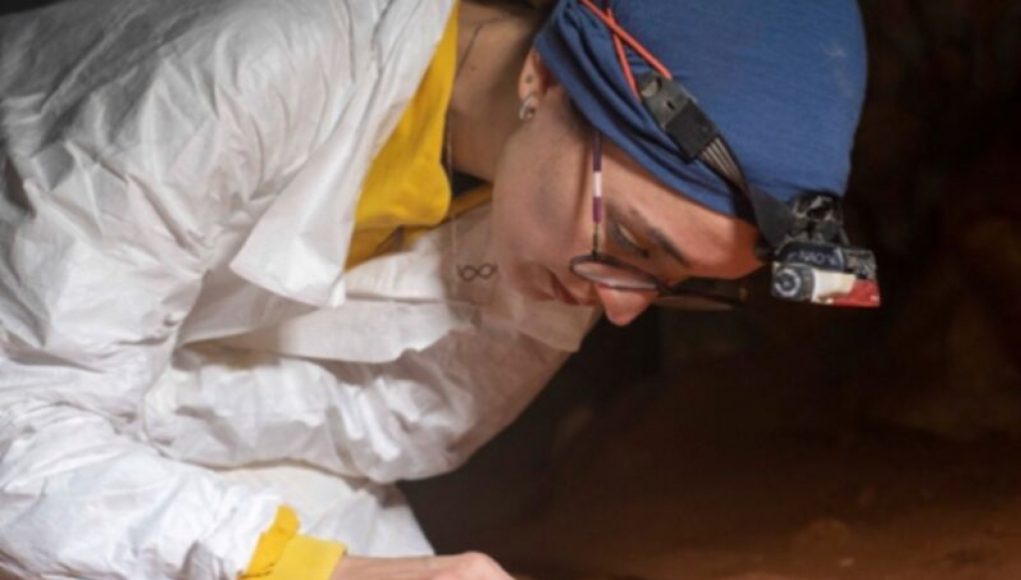Get ready to travel back in time with archaeologist Maria Medina and her groundbreaking research on “smoke archaeology.” For over a decade, Medina has been analyzing the remnants of torches, fire, and smoke in French and Spanish caves to reconstruct Europe’s prehistoric past. And her latest discovery is a game-changer: humans visited the Caves of Nerja as far back as 41,000 years ago, a full 10,000 years earlier than previously believed! This exciting news was published in the journal Scientific Reports, and it’s just the tip of the iceberg when it comes to the fascinating history of these caves.
The Caves of Nerja are located in Malaga, Spain, and boast paintings believed to date back 42,000 years. They were discovered in 1959 by five friends who gained access via a narrow sinkhole dubbed “La Mina.” There are two main parts to this subterranean structure: Nerja I includes Show Galleries that tourists can enter, while visitors are barred from Nerja II, which includes an Upper Gallery and a New Gallery, first discovered in 1969. Concerts and festivals are held in the Hall of the Waterfall or Ballet, with a seating capacity for up to 100 people. Down one hall is the Organ Corner, so named because it has fluted columns that produce different musical notes when struck. There’s even evidence that this may have been an intentional modification!
Archaeological excavations of the Nerja Caves over the decades have unearthed skeletal human remains dating back to around 25,000 BCE on, as well as animal bones, shells, fish bones, and stone and bone tools. Small groups of humans used the caves seasonally until 21,000 BCE, when they became a permanent residence. By 4500 BCE, it seems the caves were being used for farming and making pottery. Textiles were being made by 3800 BCE, with some parts of the cave being used for burial.
But what’s really exciting is how studying these caves using fire and smoke can tell researchers more about the customs and rituals of these prehistoric humans. In 2021, Medina and several colleagues conducted experiments with three different kinds of Paleolithic lighting sources in the hopes of shedding some light (pun intended) on what those various illumination methods might tell us about the emergence of “human symbolic and artistic behavior” in the form of cave art. The Spanish team conducted their experiments at the Isuntza 1 Cave in Spain’s Basque country. They chose lighting types based on known archaeological data: five torches, two stone lamps with animal fat, and a small fireplace.
Their measurements showed that the various lighting sources had very different characteristics and were thus probably used in different contexts. The wooden torches, for instance, emitted light in all directions, up to nearly six meters (19.6 feet), and lasted an average of 41 minutes. The torches exhibited uneven light intensity and often needed to be relit by waving them from side to side, and they produced a lot of smoke, so they worked best for exploring caves or crossing wide spaces. This kind of research is crucial for understanding the lives of our prehistoric ancestors and the evolution of human culture. So next time you visit a cave, take a moment to appreciate the history and mystery that lies within!
In a major archaeological breakthrough in Nerja, Spain, new evidence has revealed that humans were frequenting the Ill-Famed Nerja Caves over 41,000 years ago. This new evidence has been uncovered due to the practice of what is known as “Smoke Archaeology.”
Smoke Archaeology is a unique practice in which researchers identify and analyse burnt marks in cave walls or ceilings in order to determine the past activities that may have taken place inside a cave. Such in-depth research of marks found on the walls of the famous Nerja Caves has provided abundant evidence that humans were extant at the site approximately 41,000 years ago.
The team of Smoke Archaeologists from the Autonomous University of Madrid used non-invasive scanning technology known as Terrestrial Laser Scanning (TLS) to capture three-dimensional images of the interior of the caves. Through their detailed analysis of the scans, they identified a variety of charred marks believed to be left behind by human activity.
Armed with this new evidence historians and archaeologists are now able to tell a story of human activity in one of the world’s most famed cave systems which predates the existing understanding of its earliest inhabitants.
The study also uncovered fruit, grass, and nuts that had been burned as part of ancient meals. The burnt leftovers are yet another indicator of the potential that humans were frequenting the Nerja Caves.
The findings have demonstrated the remarkable perseverance of Smoke Archaeology due to its ability to discover and interpret traces of human activity in ways that other methods of archaeology cannot.
This new evidence suggests a history of human inhabitation of the Nerja Caves for much longer than previously thought, providing a fascinating glimpse into Europe’s distant past.















